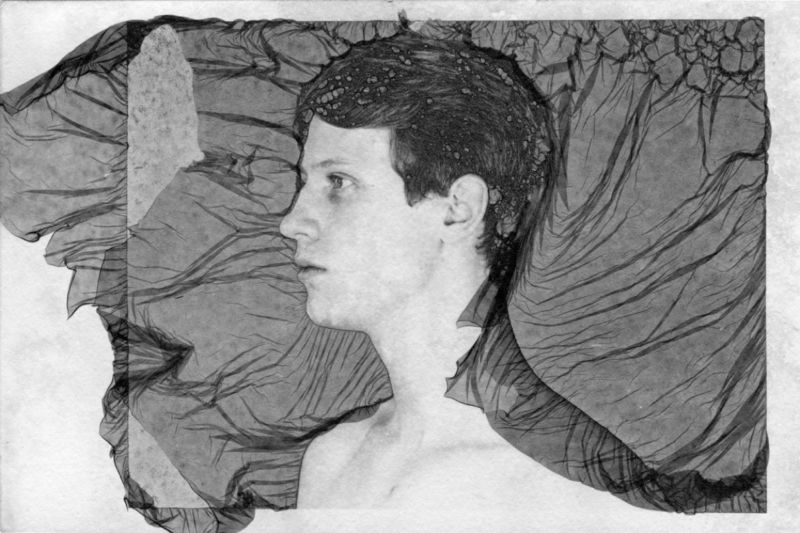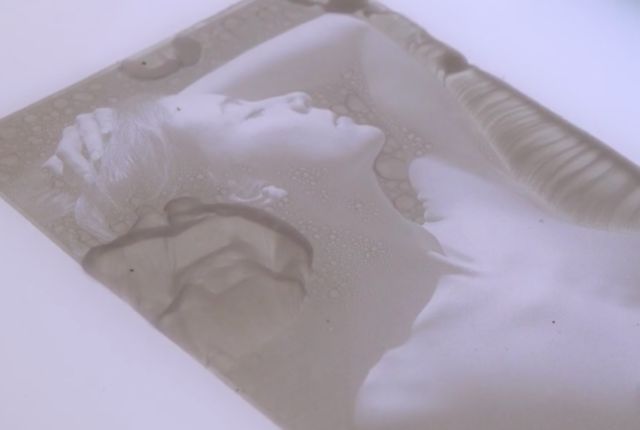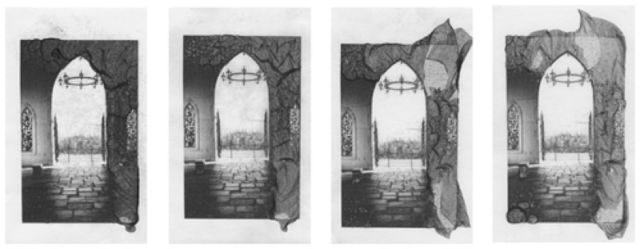
Mordançage is a photographic course of that yields hanging black-and-white pictures characterised by ghostly veiling results. Scientists from George Mason College have not too long ago discovered exactly what is going on chemically in the course of the course of, in line with a recent paper in Analytical Chemistry.
Mordançage has its roots in a late 19th-century technique of adjusting a movie damaging to a optimistic, first documented by a person named Paul Liesegang in 1897. Within the 1960s, French photographer Jean-Pierre Sudre additional refined the approach to supply silver gelatin prints and dubbed it "Mordançage." It is also referred to as "etch-bleaching," as a result of it makes use of an acid-copper bleaching resolution to dissolve the darker components of the silver gelatin layer in order that it partially lifts away from the print. These areas can both be rubbed away, creating a picture reversal, or retained to supply a veiling impact.
The answer is then rinsed off in a water tub (an extra stop-bath step is elective), then the print is redeveloped to revive the black coloration earlier than being dried and pressed flat. The consequence: these darkish areas that had lifted from the paper in the course of the earlier stage of the method are preserved to supply the ghostly ultimate veils. Sudre's American protegé, Elizabeth Opalenik, is probably the best-known photographer who makes use of the method.
Mordançage works finest for photos with numerous black or detailed darkish patterns since darker areas expertise extra dissolution. The commonest resolution consists of copper chloride, citric acid (or glacial acetic acid), and hydrogen peroxide blended with distilled water.

Vimeo/Elizabeth Opalenik
There have been a number of patents regarding an analogous chemical course of, in line with GMU chemists Caroline Fudala and Rebecca Jones, the authors of this newest paper. This means that the copper chloride performs a big function within the preliminary bleaching. Hydrogen peroxide is thought to melt gelatin throughout bleaching and therefore possible additionally performs a job. Opalenik has mentioned that paper kind can be a think about controlling the method.
However there have been no rigorous experiments to again up these assertions. "Clearly, the varied elements of the method are interacting with the silver gelatin photographic print," the authors wrote. "Nonetheless, the chemical particulars and processes, particularly concerning the formation of veils, has remained obscured."
So Fudala and Jones carried out a sequence of experiments to place these assertions to the check. First, they created black-and-white pictures utilizing 35mm movie and commonplace darkroom procedures, utilizing totally different sorts of photographic papers (multi-grade resin-coated, fiber primarily based, and cotton rag). They used a filter to extend distinction within the photos and an enlarger to undertaking photos onto the photographic paper.
As soon as the prints had been dry, they subjected them to the Mordançage course of. Throughout these experiments, Fudala and Jones measured how a lot hydrogen peroxide was absorbed by the paper, they usually famous correlations between how lengthy a print was submerged within the resolution and the kind of photographic paper used. Additionally they carried out spectral and pH measurements to find out the consequences of the copper chloride.

Fudala and Jones/Analytical Chemistry
They discovered that the hydrogen peroxide and acetic acid served to melt the photographic paper. That meant the copper chloride was higher in a position to permeate it and oxidize the metallic silver, turning it to silver chloride because the floor layers raise off as veils. The veils darken once more throughout redevelopment as a result of the silver chloride returns to metallic silver. The emulsion raise continues within the water tub section, whereas the elective stop-bath step reacts with residual hydroxide to neutralize redevelopment.
"The ultimate drying step offers the artist one alternative for management," the authors wrote. "When making the ultimate switch from the water-bath resolution, the veils succumb to gravity and, relying upon how the print is lastly moved from the answer, reattach to the substrate in strategic places."
The GMU experiments additionally confirmed Opalenik's assertion that the kind of photographic paper used issues. Cotton-rag paper is essentially the most permeable and had essentially the most dramatic response to the Mordançage resolution, i.e., the best emulsion raise, in comparison with the resin-coated and fiber-based {photograph} papers. So Fudala and Jones used cotton-rag photographic paper to carry out management experiments to discover additional the consequences of every of the options' chemical elements (copper chloride, hydrogen peroxide, and glacial acetic acid).
The outcomes: prints processed in an answer with simply copper chloride and water bleached the print however didn't produce any emulsion raise. Prints processed in an answer of hydrogen peroxide and water, or acetic acid and water, confirmed no bleaching or emulsion raise in any respect. It takes the mixture of all three elements within the resolution to get the complete veiling impact. Lastly, as anticipated, the longer a print was within the resolution, the extra emulsion raise occurred, and the extra pronounced the ensuing veiling impact within the ultimate {photograph}.
DOI: Analytical Chemistry, 2019. 10.1021/acs.analchem.9b03205" (About DOIs).
Photographic artist Elizabeth Opalenik demonstrates her work in Mordançage and pictures photographed underwater.
